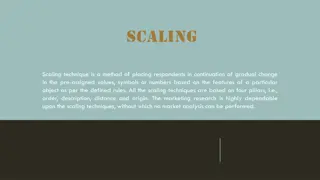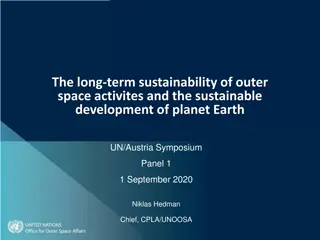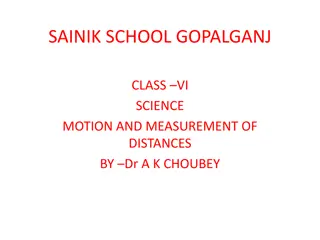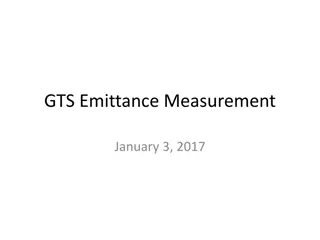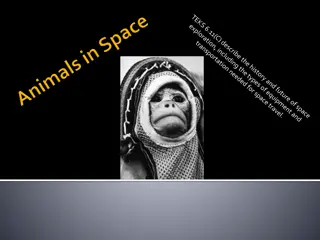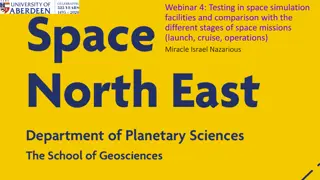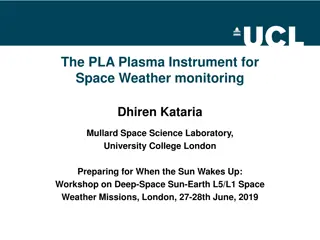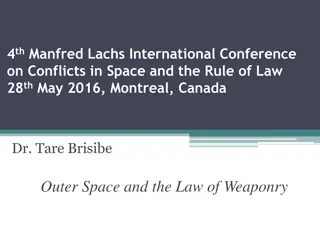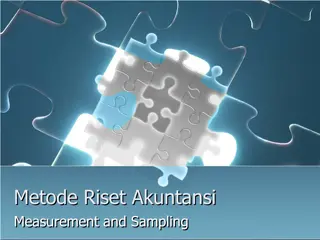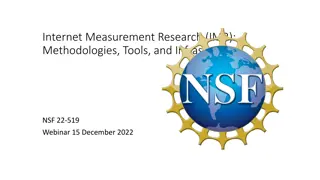Space-based Riometer Measurement Data Analysis
This research delves into characterizing radio propagation disturbances in the ionosphere using space-based riometer data. Exploring the effects of solar activity on the ionosphere, the study correlates solar activity to absorption effects and examines data sets related to solar irradiance and radio wave absorption. Progress to date includes data gathering challenges and tools development for data processing.
Download Presentation

Please find below an Image/Link to download the presentation.
The content on the website is provided AS IS for your information and personal use only. It may not be sold, licensed, or shared on other websites without obtaining consent from the author.If you encounter any issues during the download, it is possible that the publisher has removed the file from their server.
You are allowed to download the files provided on this website for personal or commercial use, subject to the condition that they are used lawfully. All files are the property of their respective owners.
The content on the website is provided AS IS for your information and personal use only. It may not be sold, licensed, or shared on other websites without obtaining consent from the author.
E N D
Presentation Transcript
Analysis of Space-based Riometer Measurement data for characterization of Radio Propagation Disturbance in the Ionosphere George Klett and Victor Mandala Mentor: Dr. Ahmed I. Sulyman
Agenda Background Research Scope Data sets Figures
What is an ionosphere? Why do I care? Background
HF Propagation - VHF Absorption Some "Sporadic" E -> lower frequencies pass through rather than reflect F is main driver D layer absorbs HF -> active during day only. Lyman- (121.6 nm)
Riometer Relative Ionospheric Opacity Absorption D layer
Research Scope Examine the effects of solar activity on the ionosphere. Solar activity -> Lyman- series (121.6 nm) Correlate to previous research of effects of absorption on 38GHz. D-layer -> riometer Absorption -> terrestrial based measurements.
Data sets Total Solar Irradiance (TSI) - (W/m^2) - Level 3 Total radiation from the sun measured at 1 AU EUV SpectroPhotometer - (ESP) - Level 0CS Irradiance around 30.4 nm Irradiance around 121.6 nm (Lyman- ) Solar Flux Density SFU = 10^-22 * W/(m^2 * Hz) Time density of energy from the sun on earth's surface Absorption (dB loss) Energy loss of radio waves, 3 dB loss ~ of power lost
Progress To Date Good News Bad News Lots of code done Importing Processing Plotting Not enough Data Waiting for more riometer data Incomplete data sets Our findings rely on a long timeframe Many things affect the ionosphere Randomness in short term Monte-Carlo
Data Gathering Some data we have easy access to level 3 data, a single file Riometer TSI Some data takes more time Python coded API tools EUV Irradiance GOES, EVE, LISIRD, etc. Level 0-2 can be hundreds or thousands of files
Data Processing Methods Developed Tools Import data from .txt files Process it Highest value -> filter to one value per day for compatibility with Level 3 data Plot it Have modularized code for when more data is received, will be a shorter amount of time to process it.
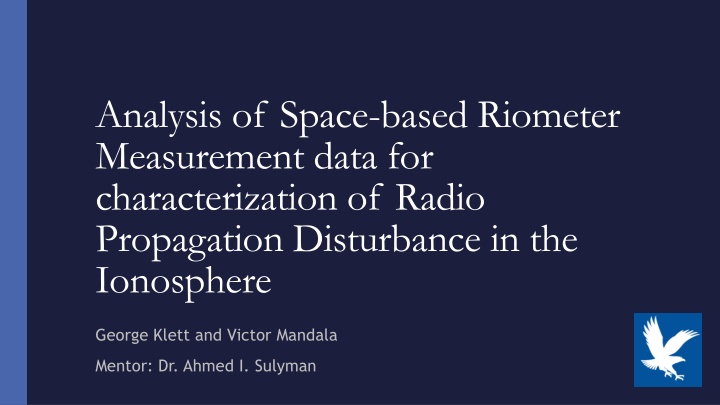

![Read⚡ebook✔[PDF] Linking the Space Shuttle and Space Stations: Early Docking Te](/thumb/21519/read-ebook-pdf-linking-the-space-shuttle-and-space-stations-early-docking-te.jpg)
![READ⚡[PDF]✔ Emerging Space Powers: The New Space Programs of Asia, the Middle Ea](/thumb/21554/read-pdf-emerging-space-powers-the-new-space-programs-of-asia-the-middle-ea.jpg)
